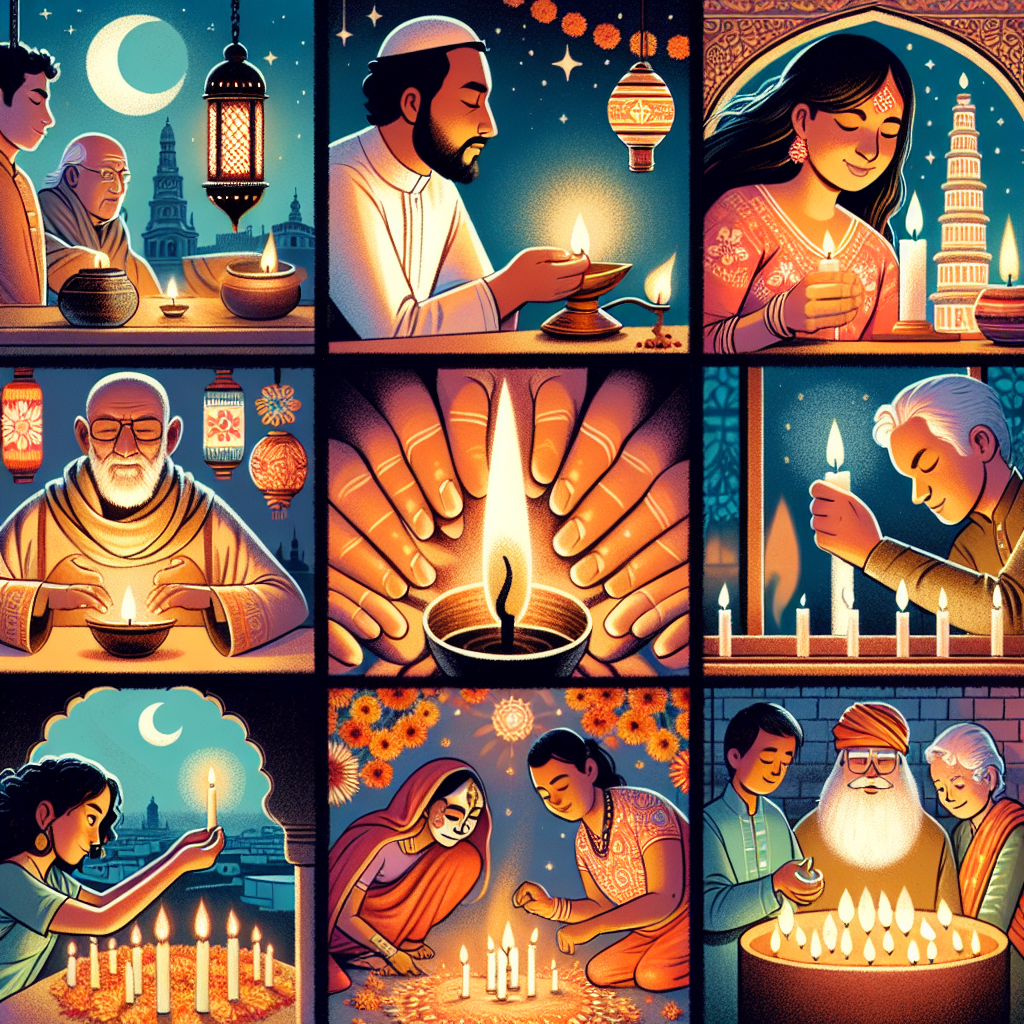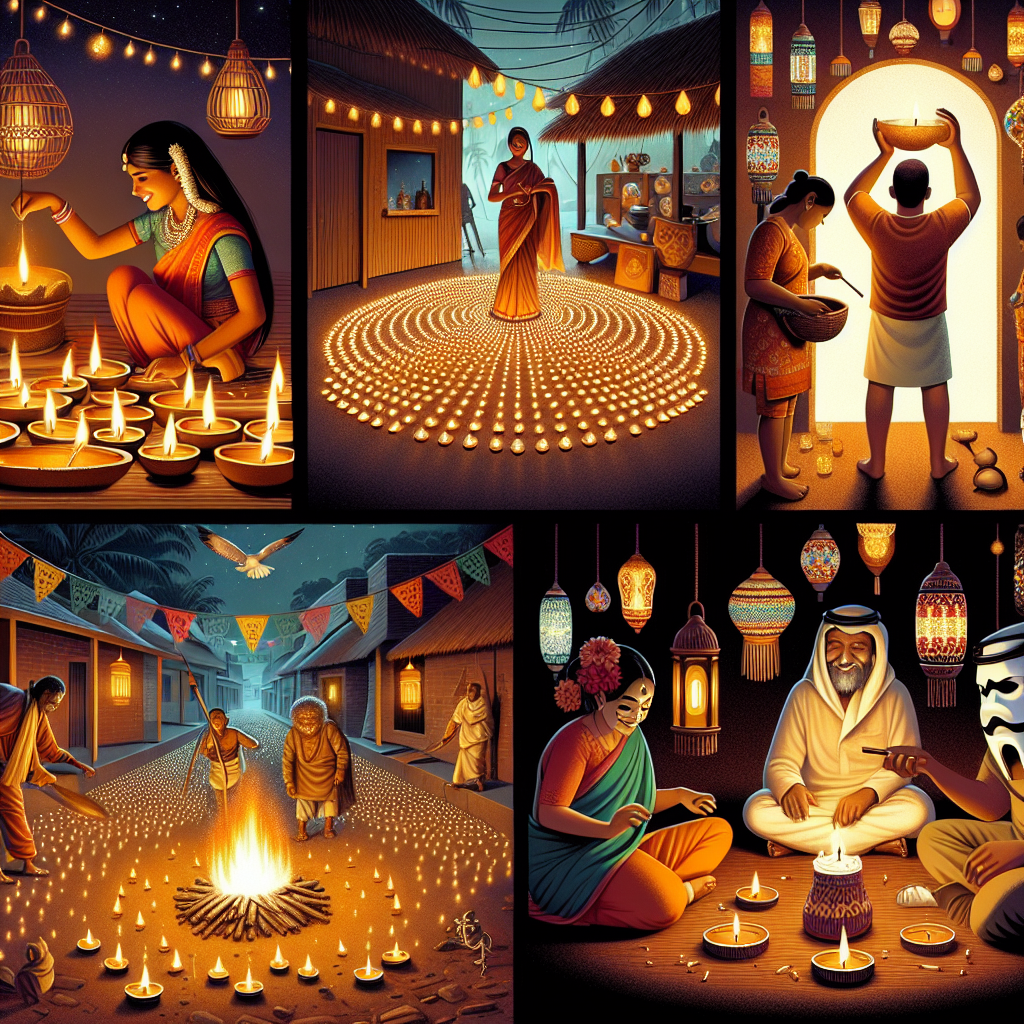-
Table of Contents
Illuminating traditions, embracing diversity.
Lighting holds immense cultural significance in various traditions around the world. From religious ceremonies to festive celebrations, the use of light has been an integral part of human culture for centuries. It symbolizes enlightenment, spirituality, hope, and joy, and plays a crucial role in creating a vibrant and meaningful atmosphere during important cultural events. Whether it is the lighting of candles, oil lamps, bonfires, or the illumination of buildings and streets, the cultural significance of lighting transcends borders and connects people across different traditions and beliefs.
Sure, I can do that. Please go ahead and ask your question.
Lighting Traditions in Japanese Festivals
Lighting Traditions in Japanese Festivals
When it comes to cultural traditions, Japan is a country that never fails to amaze. From its vibrant festivals to its rich history, there is always something fascinating to discover. One aspect of Japanese culture that holds great significance is the use of lighting in various festivals. These festivals not only illuminate the night sky but also bring people together in celebration.
One of the most famous lighting traditions in Japan is the Obon Festival. Held in mid-August, this festival is a time for Japanese people to honor their ancestors. During this festival, lanterns are lit and placed outside homes to guide the spirits of the departed back to the world of the living. The soft glow of these lanterns creates a serene and peaceful atmosphere, allowing families to come together and pay their respects.
Another notable lighting tradition is the Hanabi Taikai, or fireworks festival. Fireworks have been a part of Japanese culture for centuries and are often used to mark special occasions. The Hanabi Taikai is a spectacular display of fireworks that lights up the night sky in a dazzling array of colors and patterns. People gather in parks and along riverbanks to witness this breathtaking event, creating a sense of unity and joy.
In addition to these festivals, there is also the Toro Nagashi, a lantern floating ceremony. This tradition takes place during the Obon season and involves releasing lanterns into rivers or the sea. Each lantern carries a message or prayer for loved ones who have passed away. As the lanterns float away, their warm glow symbolizes the spirits’ journey to the afterlife. This ceremony not only honors the deceased but also brings solace to those left behind.
One of the most enchanting lighting traditions in Japan is the Tanabata Festival. Celebrated on July 7th, this festival is based on a romantic legend about two star-crossed lovers. During this festival, streets and shopping arcades are adorned with colorful paper decorations and bamboo branches. These decorations are lit up with small lanterns, creating a magical atmosphere reminiscent of a starry night. People write their wishes on strips of paper and hang them from the bamboo branches, hoping that they will come true.
The use of lighting in Japanese festivals goes beyond mere decoration. It is a way to connect with the past, honor loved ones, and celebrate the present. The soft glow of lanterns and the vibrant colors of fireworks create a sense of wonder and joy that is truly unique to Japanese culture.
In conclusion, lighting traditions in Japanese festivals hold great cultural significance. From the Obon Festival to the Hanabi Taikai, these traditions bring people together in celebration and remembrance. The soft glow of lanterns and the dazzling display of fireworks create a cheerful and enchanting atmosphere that is truly captivating. So, the next time you find yourself in Japan during one of these festivals, make sure to take a moment to appreciate the beauty and cultural significance of the lighting traditions.
Illuminating the Role of Candles in Christian Rituals
Candles have long played a significant role in Christian rituals, illuminating the path of believers and symbolizing the presence of God. The flickering flame of a candle has a mesmerizing effect, captivating the senses and creating an atmosphere of tranquility and reverence. From the lighting of the Advent wreath to the Easter Vigil, candles hold a special place in the hearts of Christians around the world.
One of the most well-known uses of candles in Christian traditions is during the Advent season. As the anticipation of Christmas builds, the lighting of the Advent wreath becomes a cherished ritual. Each Sunday leading up to Christmas, a new candle is lit, representing the increasing light of Christ entering the world. The first candle, often purple, symbolizes hope, while the second, also purple, represents peace. The third candle, pink or rose-colored, signifies joy, and the fourth candle, another purple one, stands for love. Finally, on Christmas Eve, the center candle, known as the Christ candle, is lit, symbolizing the birth of Jesus and the ultimate light of the world.
Candles also hold a prominent place in the Easter Vigil, the most important liturgical celebration in the Christian calendar. As darkness envelops the church, a single flame is kindled, representing the resurrection of Christ. This flame is then used to light the Paschal candle, a large candle adorned with symbols of Christ’s victory over death. From this central candle, the light is shared with the congregation, spreading throughout the church as a symbol of the resurrection’s transformative power. The glow of the candles creates a sense of awe and wonder, reminding believers of the hope and new life found in Christ.
Beyond these specific rituals, candles are often used in daily worship and prayer. Lighting a candle before a statue or image of a saint is a common practice, symbolizing the believer’s desire for intercession and guidance. The soft glow of the candle serves as a reminder of the saint’s presence and the believer’s connection to the divine. In some traditions, candles are also used during the sacraments, such as baptism and confirmation, signifying the light of Christ entering the life of the individual.
The cultural significance of candles in Christian traditions extends beyond their symbolic meaning. The act of lighting a candle can be a deeply personal and meditative experience. As the match is struck and the flame dances to life, worries and distractions fade away, replaced by a sense of peace and focus. The gentle flicker of the candle becomes a focal point, drawing the believer into a state of prayer and contemplation. In this way, candles serve as a physical representation of the spiritual journey, guiding believers towards a deeper connection with God.
In conclusion, the role of candles in Christian rituals is both symbolic and practical. From the lighting of the Advent wreath to the Easter Vigil, candles illuminate the path of believers and remind them of the presence of God. The flickering flame creates an atmosphere of tranquility and reverence, inviting believers to enter into a state of prayer and contemplation. Whether used in specific rituals or in daily worship, candles hold a special place in the hearts of Christians around the world, serving as a tangible reminder of the light of Christ.
The Symbolic Meaning of Light in Hinduism
Light holds great symbolic meaning in Hinduism, a religion that is deeply rooted in ancient traditions and beliefs. In Hinduism, light is seen as a representation of knowledge, purity, and divine energy. It is believed to dispel darkness and ignorance, leading individuals towards enlightenment and spiritual awakening.
One of the most significant festivals in Hinduism that celebrates the symbolic meaning of light is Diwali, also known as the Festival of Lights. Diwali is a joyous occasion that marks the victory of light over darkness and good over evil. During this festival, homes and streets are adorned with colorful lights, oil lamps, and candles, creating a mesmerizing spectacle that illuminates the night sky.
The lighting of lamps during Diwali is not merely a decorative gesture; it holds a deeper spiritual significance. It is believed that the light from the lamps guides the goddess Lakshmi, the Hindu deity of wealth and prosperity, into people’s homes. By lighting lamps, Hindus invite her blessings and good fortune into their lives.
In addition to Diwali, light plays a crucial role in other Hindu rituals and ceremonies. For example, during weddings, the bride and groom are often seated under a canopy of lights, symbolizing the divine presence and blessings of the gods. The light is believed to purify the couple and bring them prosperity and happiness in their married life.
Furthermore, in Hindu temples, light is used to worship the deities. Devotees offer lamps and incense to the gods, creating a serene and sacred atmosphere. The flickering flames of the lamps are seen as a representation of the divine energy and the presence of the gods. It is believed that the light from the lamps helps individuals connect with the divine and seek spiritual enlightenment.
Light is also an integral part of meditation and yoga practices in Hinduism. Many practitioners light a candle or an oil lamp during their meditation sessions to create a peaceful and focused environment. The soft glow of the light helps individuals calm their minds and delve deeper into their spiritual journey.
In Hindu mythology, there are numerous stories and legends that highlight the significance of light. One such story is the tale of Lord Rama, who returned to his kingdom after defeating the demon king Ravana. To celebrate his homecoming, the people of Ayodhya lit thousands of lamps, symbolizing the triumph of good over evil.
The symbolic meaning of light in Hinduism extends beyond the physical realm. It represents the inner light of knowledge and wisdom that leads individuals towards self-realization and spiritual growth. It is believed that by embracing the light, one can overcome the darkness of ignorance and attain enlightenment.
In conclusion, light holds immense cultural and symbolic significance in Hinduism. From the grand celebrations of Diwali to the serene ambiance of temples, light plays a vital role in various traditions and rituals. It represents knowledge, purity, and divine energy, guiding individuals towards spiritual awakening and enlightenment. By embracing the light, Hindus seek blessings, prosperity, and a deeper connection with the divine.
Q&A
1. How is lighting culturally significant in Hindu traditions?
Lighting holds great cultural significance in Hindu traditions as it symbolizes the victory of light over darkness and knowledge over ignorance. Diwali, the festival of lights, is a major Hindu celebration where lamps and candles are lit to welcome the goddess of wealth and prosperity, Lakshmi.
2. What is the cultural significance of lighting in Jewish traditions?
In Jewish traditions, lighting plays a significant role in various religious observances. The lighting of the menorah during Hanukkah symbolizes the miracle of the oil that lasted for eight days in the ancient temple. Additionally, the lighting of Shabbat candles on Friday evenings marks the beginning of the Sabbath, a day of rest and spiritual reflection.
3. How is lighting culturally significant in Buddhist traditions?
Lighting holds cultural significance in Buddhist traditions as it represents enlightenment and the dispelling of darkness. During Vesak, the celebration of Buddha’s birth, enlightenment, and death, devotees light candles and lanterns to symbolize the illumination of wisdom and compassion. Lighting also plays a role in various meditation practices, creating a serene and focused environment.In conclusion, lighting holds significant cultural importance in various traditions around the world. It serves as a symbol of spirituality, enlightenment, and celebration in religious ceremonies and festivals. Lighting also plays a crucial role in creating ambiance and setting the mood for various cultural events and gatherings. Whether it is the Diwali festival in Hinduism, the Hanukkah celebration in Judaism, or the Christmas festivities in Christianity, lighting holds deep cultural significance and is an integral part of these traditions.

